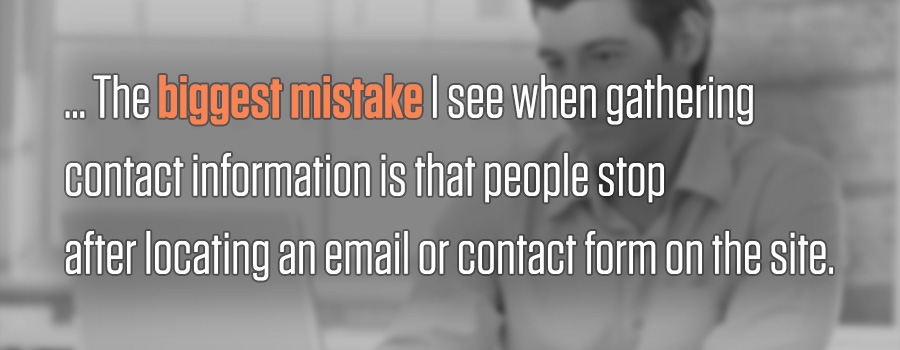
Is Your Backlink Profile Hurting Your Ability To Generate Leads?
Your team spends a lot of time and energy creating and promoting your website with content to help increase awareness/generate backlinks to your site. However, all of that hard work can be wasted if your site has a bad collection of backlinks.
If your site has a collection of bad links, it’s normally due to one of three reasons: (1) A past SEO company was creating shady links hoping it would help you rank, (2) undereducated staff thinking it is helping when, in reality, it is hurting, or (3) a negative SEO attack from a competitor.
No matter how these links got there, it’s important we either get them removed or add them to our disavow list (if several attempts to remove them were unsuccessful). In this post we’ll look at how we determine whether to keep or remove a link, and how to find the proper contact information.
Keep or Remove?
When auditing a backlink profile, there is one question that should guide you to your removal decision: Would it make sense for this link to be on this site if links were not a ranking factor? Using this methodology when you come across your guest blog posts on industry blogs, vendor directories in trade journals or links to the content assets you’ve created — it’s a no-brainer to keep them. Then when you encounter spammy forum comments, article banks and/or weird general directories, it makes sense to put them on your remove list.
If that first methodology is a little too general, there is one other way to determine whether to keep or remove. This methodology involves weighing two factors — relevancy and authenticity. When it comes to relevancy, we are really looking at this: Does it make sense that our site is mentioned in the context of the site linking to us? Would a third party think it is strange that your site is linked to here? If so, then we would consider removing it. For authenticity, we want to look at the quality of the site. Does it look like there are people really trying to provide value with this site? Or does it look like someone is just publishing content to accept paid posts and collect AdSense revenue? If the site falls on the negative side for those two factors, we would want to remove that link.
Finding the Contact Information

This sounds simple, but the biggest mistake I see when gathering contact information is that people stop after locating an email or contact form on the site. Odds are if you are trying to get your link removed from this site, there are hundreds of other people trying to do the same thing. Simply using the same contact information is going to get your email in an unchecked inbox with a thousand others like it.
What you need to do is find that second piece of contact information. We always suggest looking at the “Whois” data, which may give you a phone number or email address. We also try to find related social media channels, which may contain email addresses that are not on the site. If the site has a PayPal button, that is great from a contact-gathering perspective. We suggest doing a fake paid submission because once you get to the page where you would enter your PayPal login information, you will see either a name (of which you can research to determine this person/company) or you will find an email address. If the contact is accepting money, then this email address is viable. Finally, we will look at what other sites are on this IP address; it may reveal other sites owned by this webmaster.
Most of the time a poor backlink profile is not the reason your site isn’t ranking well. If it is a really big issue, you will see a message in Google’s Search Console about a link penalty. If for some reason things just don’t seem right, it is always worth auditing your backlink profile to see if that helps your situation.




